【Cycling Diary】Limestone and Grasslands: The Akiyoshidai Circular
We cycled to Akiyoshidai 秋吉台 in Yamaguchi 山口 Prefecture. Starting in Ogori 小郡, we cycle north west on the 28 from the Fushimi river 伏見川. After a kilometre, on the right hand side of the road, there is a useful 7/11 convenience store where it is possible to stock up on provisions for what will be quite a tiring day in the saddle.
Departing from 7/11 on the 28, 150m NW of the intersection with the 9, the road soon begins to pick up to an average incline of 4 or 5%. As we left the town we saw a billboard on the left hand side of the road advertising ‘Safari-land’ which, it indicates is 27km further north. At this point it is possible to continue cycling on the road or on a cycling path which is accessible by crossing the Ota river 大田川 on the left hand side of the road. Both routes weave their way up the Nihongi pass 二本木峠, a 5km ride, which is a particularly pleasant cycle through an area of beautiful woodland and flowing streams.
The top of the pass is at 250m where the cycle path emerges on to an open and rich agricultural plain and gently descent. Less than a km into the descent we stop at Ciarra Organic きららオーガニック, a plant and vegetable nursery which has a coffee shop and toilet facilities. It is also a member of the ‘cycle Yamaguchi’ where you can acquire local cycling information and borrow tools for any essential bike maintenance.
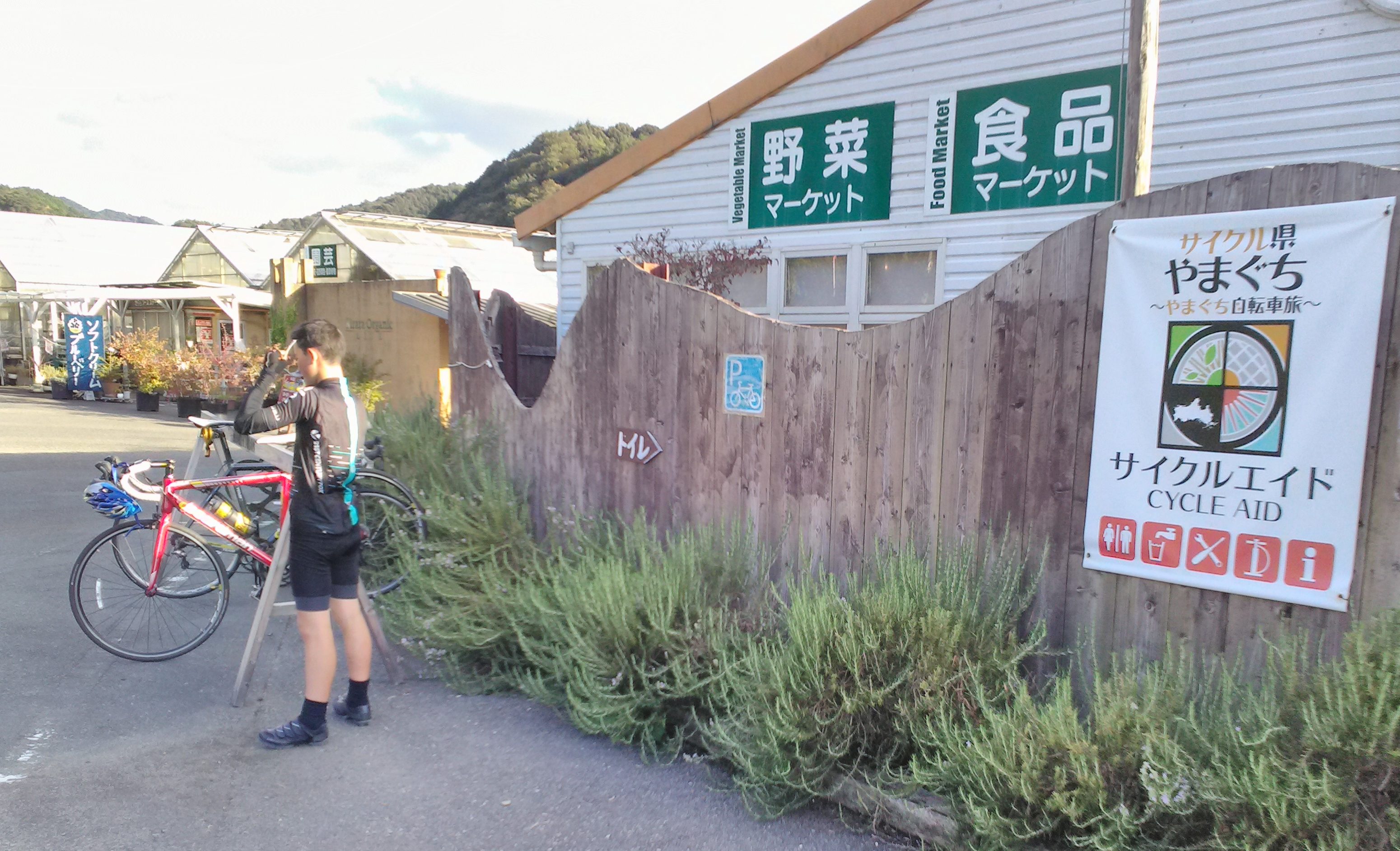
There is a small village at the junction of the 28 and the 31. Turn left on to the 31 and there is a handy convenience store that can be found after a couple of hundred metres. However, we turned right and continued along the 28 passing a line of tall trees on the left side of the road.
Emerging from village, the road continues to gently wind its way upstream across a relatively wide agricultural plain which is dominated by rice paddies.
Having crossed the plain, the 28 veres to the left and we begin another 5% climb, that extends for no more than 1500m, through woodland. Passing the intersection with the 30 on the left, we emerge into the Mito 美東, a small largely agricultural village.
In Mito, there is a 7/11 at the intersection of the 28 and the 435 where we stopped for a snack, coffee and topped up our water bottles.
From here we took the 435 west, crossing the river Ota. The road is wide and smooth and appears to have been constructed to accommodate at least ten times the amount of traffic that it actually contains. The road rolls across the open countryside passing through a 600 metre tunnel, which has a wide pavement to cycle on. A 5km ride and we arrive at the traffic light interesection with the 240.
A further 10km west on the 435 and we cycle into a tourist honeypot village of Akiyoshi 秋吉. The village appears to have grown around tourism and, during the peak season, I imagine that it crammed full of coachloads of people flocking to the attractions.
Located on the northern side of Akiyoshi, Akiyoshindo 秋芳洞 Cave is Japan’s largest cave. Surrounding its entrance are numerous buildings and large car parks suggesting that it must get busy here during the tourism season but today there is no one to be seen.
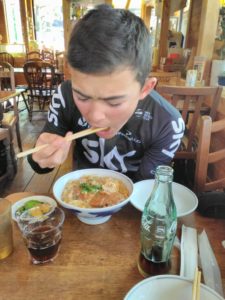
We stop in Akiyoshi, quite close to the entrance to the cave, for a lovely lunch of Katsudon: a tasty pork and rice dish which we would warmly recommend to any cyclist.
In Akiyoshi we leave the 435 and head north along the 212, otherwise know as the Karst road. After 2km we passed through a 500m tunnel descending slightly to a set of traffic lights. Turning left we continued along the 212 to start of 3km climb, averaging 8%, through woodland and up to the Akiyoshidai plateaux.
As it weaves its way uphill, the Akiyoshidai, Karst Road, has been peppered with limestone rocks of various shapes and sizes. On a particularly steep switch back section of the road the Japanese tourism authority a strategically located a rock in the shape of a horses head. We contemplate the symbolic meaning of this Godfather statue as we sweat our way around the steep bend in the road.
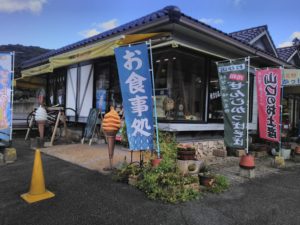
The climb through the woodland to the Akiyoshindai plateaux is a little over three kilometre long. Emerging from the woodland, we reached a vast open, rolling grassland landscape. There is little up here, no shops, houses or trees. It is Autumn and a strangely eerie feeling descends upon as we contemplate being in a tourist honeypot with no one in sight.
Towards the northern side of the plateaux, we stop at an information point with car park, toilets and some boards detailing potential walking routes across the plateaux.
Continuing a little further north along the 212, the road soon begins a 3km sweeping descent off the plateaux. At the bottom we emerge in to a more familiar landscape of woodland with occasional rice paddy openings but are immediately faced with another tourist attraction ‘Safari Land’.
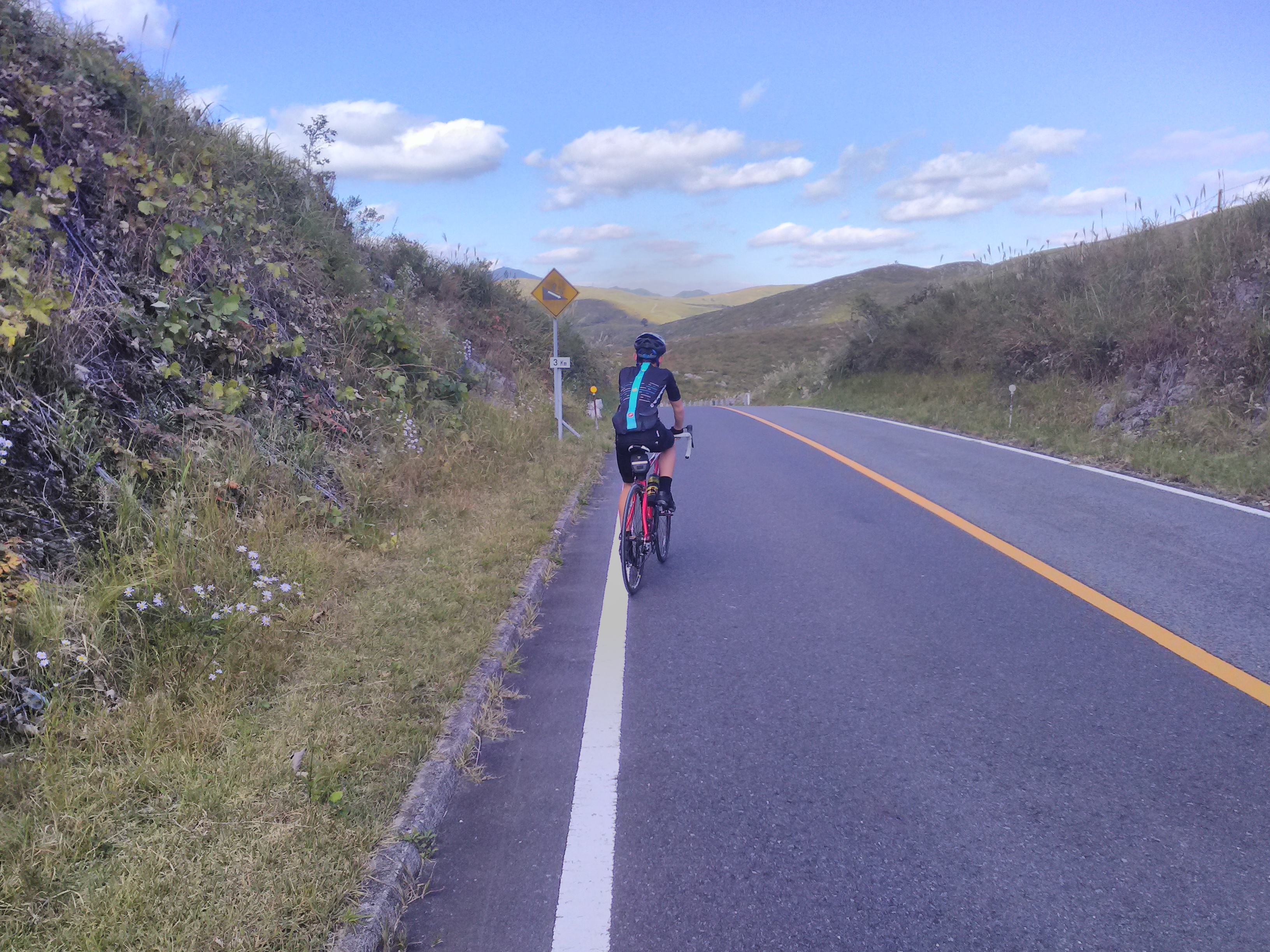
We avoid safari land and turn left onto the 239, initially heading north but the tuning west. To our left we look up towards the Akiyoshidai plateaux, but down here the narrow remote road weaves its way up a gentle incline through woodland until, after 2km it begins to open up into a more agricultural area. Over the next 7km we encounter no one and eventually arrive into the small village at the intersection of 239 and 36.
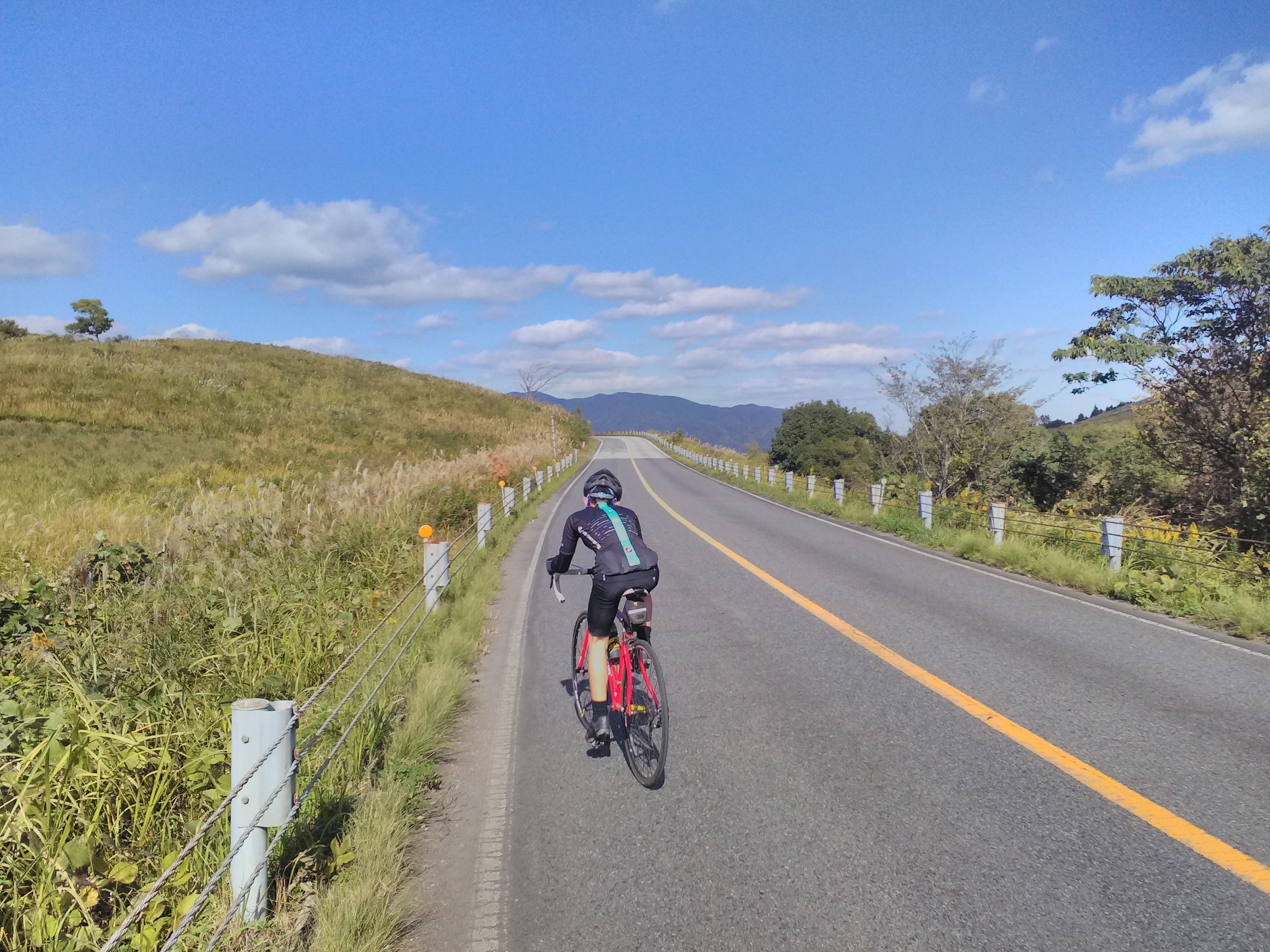
The village has a river running through it, a small primary school and one, rather antiquated supermarket. We stop here to rest and have a small snack. Passing children look cautiously at us, we suspect this is because probably few Lycra clad gaijin pass through Kama.
We turn south on to the 31. After a kilometre we take a right turn into Beppu which is famous for an emerald pond on the western side of the village.
Continuing south on the 31,we stop briefly at a small pond in Saifukuji which acts as a tiny reservoir that feeds the local paddy field irrigation system.
After Saifukuji, the 31 turns into the 30, Following the 30 south for a further 7km further 7km we eventually pass back through Akiyoshi and into an ever increasingly wide valley bottom which forms the basis of a rich agricultural landscape.
Cycling for a further 7 km along the 30, we arrive back at the intersection between the 30 and 28. At the intersection with the 28, we turn right and follow the 28 back to Ciara Organic. Here we hung up our bikes and rested for a few minutes before descending down the Nihongi pass 二本木峠 returning to our starting point in Ogori 小郡.
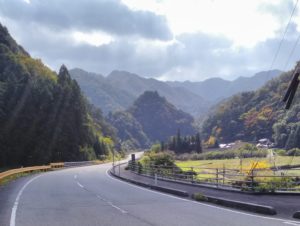
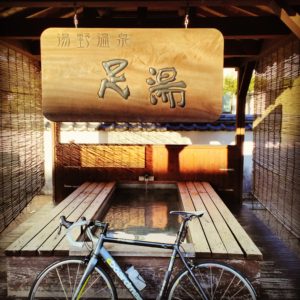
nice write up on it
there is a family campground before Safari Land, 1000 yen a night, has onsen and restaurant